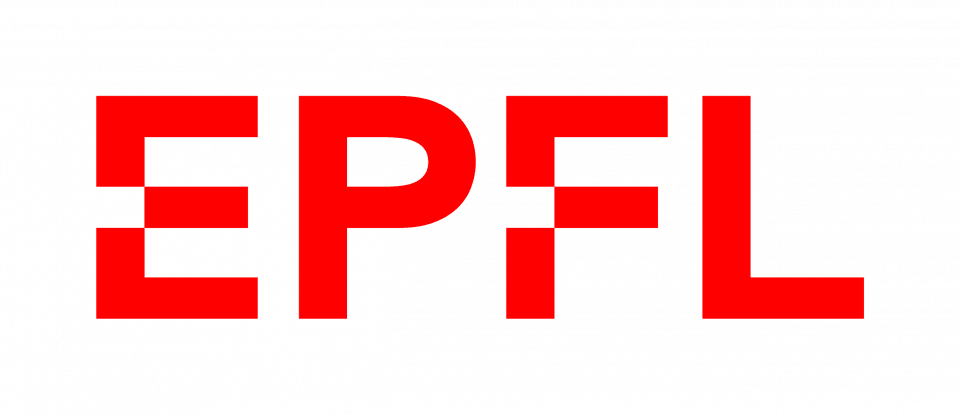"We'll naturally learn to adopt AI-driven technology in our daily lives"
Silvia Quarteroni, an EPFL Master’s graduate in computer science, is the chief transformation officer and head of innovation at the Swiss Data Science Center. She’s an expert in artificial intelligence and spoke with us about the heightened visibility her field is now getting, as well as the challenges that lie ahead.
You initially studied literature before deciding to enroll at EPFL. What prompted you to switch from the humanities to computer science?
When I was a high school student in Italy, my focus was on classics (Greek and Latin). But I graduated right in the middle of the dot-com bubble, in 1999, and was curious about this field and especially about how search engines worked. I had studied linguistics as part of my literature track, and I was fascinated by how computers could grasp human language. To me, the link between the two disciplines was fairly clear. That’s why I decided to enroll in EPFL’s Master’s program in computer science.
Where did your interest in AI specifically come from, and how did you pursue that during your Master’s degree?
My curiosity about search engines brought me naturally to AI, since it can improve the relevance of search engine results, such as through question answering systems. When I got to EPFL, I signed up for all classes available on the topic and particularly on machine learning. I continued in this direction throughout my degree program, completing my Master’s thesis on human-machine dialogue systems.
After graduating in 2004, I wanted to dig deeper into the topic of natural language processing. I was just 22 at the time and received a grant for the PhD program at the University of York. There, I studied interactive question answering models, which were early versions of current chatbots. Indeed, I’ve been somewhat surprised by the media attention that ChatGPT has gotten, since the technology itself has been around for over 20 years.
In addition to academia, you also have experience in business, as you worked for over six years at ELCA, a provider of customized enterprise solutions. What did you gain from this experience?
After completing my PhD I initially decided to continue in research. I joined the University of Trento, and later Politecnico di Milano, as a research fellow. I worked on two EU projects – on spoken language understanding and the effective design of web services for complex applications like event planning and property searches. After this experience, I wanted to have a more direct impact on users and in the business world. I explored different options and it quickly became clear that I should return to Switzerland, where there’s a broad range of companies and industries along with an entrepreneurial spirit.
I joined ELCA in 2012, which proved to be an enriching and instructive experience. I started out as a natural language processing expert and after a few years was promoted to senior manager. This gave me exposure to the more strategic and management-oriented aspects of my field. I handled customer relations, oversaw projects and led a small team. It was a good complement to my academic background and helped me better understand the needs of businesses and public-sector organizations. Working with others inside a company and taking on a management role showed me just how important human factors are in promoting the adoption of new technology and having a real impact on society.
Today you’re the chief transformation officer and head of innovation at the Swiss Data Science Center. What brought you to the SDSC?
I’d known about the SDSC ever since it opened, having taken part in several EPFL events to mark its inauguration in 2017. One of my former EPFL classmates, Sandro Saitta, worked there and told me about his experience and the job opportunities available.
I was excited by the prospect of joining the SDSC due to its cutting-edge research and direct impact on society. I was lucky to be hired into its innovation unit, which had just been created. Today, I lead a 25-person team that carries out strategic R&D projects through joint ventures with businesses, public-sector organizations and NGOs. I also manage continuing education programs in data science, in order to help implement these methods in the local economy.
“Many of our joint R&D projects at the SDSC are in the areas of healthcare, energy and the environment.”
The SDSC works with companies to develop customized AI-driven solutions. Could you give us some examples?
We’ve worked with organizations in just about every segment of the Swiss economy: industry, the public sector and NGOs. Many of our joint R&D projects are in the areas of healthcare, energy and the environment.
In healthcare, for example, we worked with university hospitals to incorporate AI into their clinical trials in order to more accurately determine which patients are at a greater risk of developing side effects from a given treatment. In the private sector, we worked with Bühler to use AI to identify areas where a manufacturing plant could improve its energy efficiency without compromising on productivity. And in public administration, we worked with the Swiss Federal Office of Energy to create the Energy Dashboard for tracking the country’s energy use.
These are just a few examples. The common denominator in all our projects is the processing and use of data to develop concrete, robust solutions that are ready to be implemented and that are designed to have a positive societal impact. One of our key strengths at the SDSC is our capacity to conduct responsible innovation from start to finish – that is, from data analysis to the design and marketing of an end system. Our projects are funded by the businesses and other organizations we work with. The public funding we receive is used for our academic activities.
You said you were surprised by how much media attention ChatGPT has gotten. Why do you think AI is suddenly such a hot topic, when the technology has actually been part of our lives ever since computers were first created?
I think it’s because, for the first time, users are coming face to face with the technology without a filter. Before, AI was “hidden” behind an interface, whether in the form of a search engine, streaming platform or the recommendations shown by online retailers, for example. But now, users interact directly with a natural language processing model and can clearly see the disruptive potential of this technology. The second factor is of course the impression you have that you’re communicating with a real person. The conversations are generally coherent, even when they’re long. They’re light-years away from the rudimentary chatbots of a few years ago.

“The buzz surrounding ChatGPT is a great opportunity for us to draw people’s attention to the opportunities and risks associated with AI in general.”
As an expert, how do you view the generative AI programs that are making the headlines?
I’ve been working in this field for a while, and to me ChatGPT seemed like the logical next step after previous versions of the technology. So I wasn’t really surprised. But the buzz surrounding it is a great opportunity for us to draw people’s attention to the opportunities and risks associated with AI in general. Individuals and businesses are now more aware of the potential of data processing from human signals, whether for language, images or audio. Looking more broadly, the technology is opening up a vast range of possibilities for presenting data and information more effectively. Here I’m thinking of healthcare and personalized medicine, where AI can have a real impact. It’s important for people to realize that AI programs already exist and interfaces like ChatGPT are just the tip of the iceberg.
What do you think jobs will look like in the future? Will we be able to maintain diversity in the types of jobs out there, including low-skilled ones?
Personally, I’m highly optimistic, although I realize many people are less so. Exactly what our jobs entail will certainly change in the future, at least to some extent. But just like we learned to adopt telephones and computers, we’ll naturally learn to adopt AI-driven technology in our daily lives. However, making sure that low-skilled jobs can be transitioned effectively to this technology will likely be an important issue. Even with the adoption of AI, human input will remain crucial, especially in fields like healthcare and education.
As you say, you’re very optimistic. Why do you think some people are worried about AI’s potential in this regard?
It takes time to understand what’s really behind the technology, and new things can sometimes be intimidating. What’s more, this is technology that evolves very quicky, which can add to the intimidation. It’s normal for people to wonder if they’ll be able to master a new technology; these concerns have arisen at every stage of technological advancement. I would say some media outlets are also fueling a pessimistic outlook – it’s easy to spin new technology in a way that sparks fear, and the media could see that as a way to build their audience. And it’s true that AI – just like any technology – might not always be used in a positive way. That’s why we’ve got to stay alert. Universities like EPFL have a key role to play in keeping our eyes open, setting a framework for how technology is used and running outreach initiatives so that citizens can form opinions based on objective information.
One worry relates to AI hallucinations. How can people trust generative AI programs when they’re known to sometimes provide false information?
These kinds of language models generate new content that isn’t checked and could indeed be incorrect. But this problem isn’t unique to AI – just look at fake news, for example. Regarding hallucinations, technology already exists to address them. But individuals and businesses also need to be careful in deciding when to use generative AI and when it’s best not to. I’d also point out that hallucinations are specific to language models and aren’t an issue for most of the AI models used by companies in Switzerland.
“Instead of putting the brakes on AI, with the risk of losing out on competitiveness, governments could enact laws that are clear yet flexible enough to be updated as the technology evolves.”
Many organizations are calling for stricter and clearer regulations on the use of AI. Do you think having global standards is realistic? And who should be in charge of shaping those standards, given the in-depth technical knowledge that’s required?
That’s a very good question. Today, there are just as many different points of view on AI as there are countries. And AI will have major economic impact – in 2023, McKinsey estimated that AI could add three to four trillion dollars in economic value – yet each country has its own economic policies. So it’s probably naive to think that countries around the world would agree on a single regulatory framework. The government of each country needs to think about how they can best protect the rights of their citizens while also remaining competitive in the area of AI. That’s not an easy task, and you’re right that decision-makers need to have a good understanding of the technology. Instead of putting the brakes on AI, with the risk of losing out on competitiveness, governments could enact laws that are clear yet flexible enough to be updated as the technology evolves.
That said, I think regulations should above all set forth the processes to follow and the conditions under which AI technology can be used, rather than aim to govern the many different kinds of such technology. Take the example of self-driving cars. What’s important is to set rules on how cars should be driven in general and not just self-driving cars in particular. That would enable technology to be developed in accordance with the regulatory framework.
Why is it so important to have a Swiss form of AI, and how can EPFL play a central role in achieving that?
We don’t need to develop a Swiss version of every program. But we do need to take advantage of AI’s potential by adapting it to the specific conditions in this country. Switzerland’s positioning as an international hub for AI will enable us to train experts and possibly even develop tomorrow’s benchmark-setting technology. This is also a huge economic opportunity.
To reach that goal, we need excellent universities, and that’s where EPFL stands out. The School attracts top students and professors from around the world and is a major driver of innovation. In addition, EPFL has done an excellent job of incorporating the topic of AI right from the Bachelor’s level and exploring all potential areas of application. That will ensure IT specialists aren’t the only ones who leverage the technology, but that it’s also employed by architects, chemists and more.
In addition to the SDSC, several other AI-focused initiatives have been rolled out in Switzerland in recent years – EPFL and ETH Zurich’s research centers, the SwissAI initiative and so on. How will these different organizations work together?
The role played by the research centers at EPFL and ETH Zurich is highly complementary to ours at the SDSC. They’re doing a lot to promote basic research, whereas we’re focused more on applied and translational research. Regarding the SwissAI initiative, we’re already very involved, working to translate AI technology into concrete solutions for businesses but also for society more broadly. We also collaborate with cantonal and federal organizations. For instance, the Swiss Federal Statistical Office and Lausanne University Hospital have set up AI skills centers that we interact with regularly.
Given your experience in both industry and academia, do you think you’ll be tempted to start your own business one day?
Yes, but I still haven’t found a way to satisfy that curiosity! I already work with entrepreneurs quite a bit through my role on the Innosuisse Innovation Council.
BIO
- 1981 Born in Italy
- 2004 Graduates from EPFL with a Master’s in computer science
- 2007 Graduates from the University of York with a PhD
- 2012 Returns to Switzerland and takes a position with ELCA
- 2019 Joins the SDSC
- 2022 Appointed chief transformation officer and head of innovation at the SDSC
Photo credits: Adrien Buttier - EPFL

Comments0
Please log in to see or add a comment
Suggested Articles



